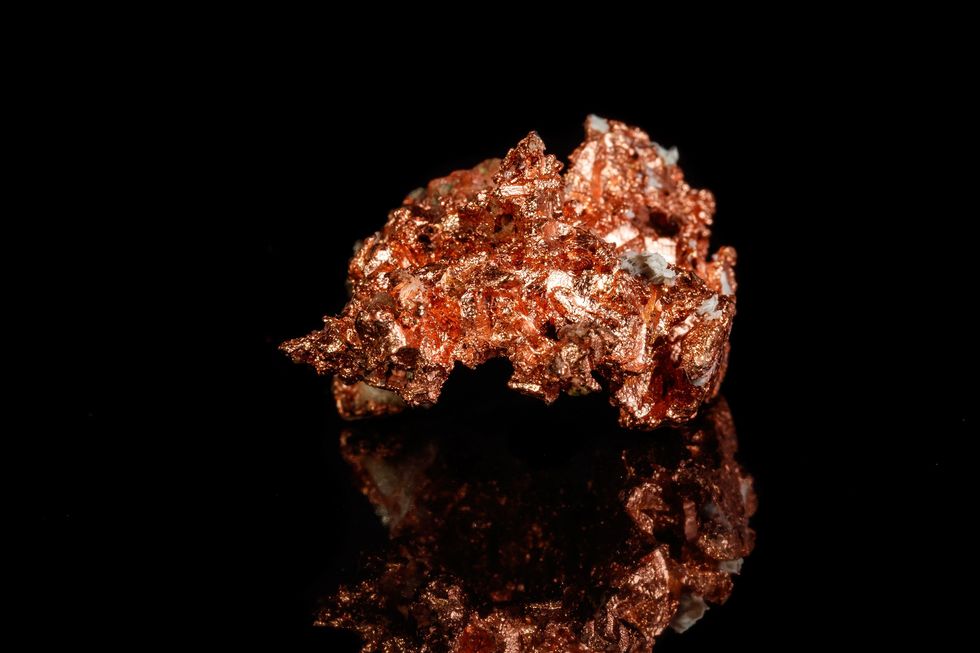As the home of the world’s second largest copper reserves and the eighth largest producer of the red metal globally, Australia has dozens of operating copper mines.
Data from Geoscience Australia’s Identified Mineral Resources report shows there were 33 operational copper mines spread across the country as of December 2021, although since then more have come online, and there are plenty more copper projects are in the exploration and development stages.
Read on to learn more about current Australian copper mines, as well as up-and-coming copper assets.
Where is copper mined in Australia?
The largest single copper mine in Australia is located in the nation’s premier copper jurisdiction: South Australia. The Olympic Dam polymetallic mine, owned by BHP (ASX:BHP,LSE:BHP,NYSE:BHP), sits on the fourth largest copper deposit in the world. It produced 138,000 tonnes of copper in BHP’s 2022 fiscal year, and it also produces gold, silver and uranium.
South Australia is home to four operational mines and holds the lion’s share of Australia’s economic demonstrated reserves of copper, taking 69 percent of that pie; this powerhouse state is followed by New South Wales at 12 percent of the country’s reserves, Queensland at 9 percent, Western Australia at 8 percent and Tasmania at 1 percent.
While South Australia has the most copper reserves, the state with the most mines is Queensland, where there were 12 as of 2022. Queensland is home to Australia’s second largest copper producer, Glencore’s (LSE:GLEN,OTC Pink:GLCNF) Mount Isa Mines complex, at which copper is produced from two underground mines: Enterprise and X41.
While Mount Isa has long been a key producer, Glencore announced in October 2023 that its underground copper operations and copper concentrator will close in H2 2025 due to economic infeasibility resulting from low ore grades, geological challenges and aging infrastructure. Its other assets in the area will continue operations, including the Mount Isa copper smelter; the George Fisher mine, zinc-lead concentrator and lead smelter; and a copper refinery in Townsville.
Many of Queensland’s other copper operations are clustered in the same region at Mount Isa, such as 29Metals’ (ASX:29M) Capricorn Copper mine and Glencore’s Ernest Henry mine.
For its part, Western Australia has nine mines and New South Wales has eight. Both host mines sitting on large copper reserves, including the Telfer mine in Western Australia, owned by Newmont (TSX:NGT,NYSE:NEM), and the Northparkes and Cadia East mines in New South Wales, which are owned by China Molybdenum (OTC Pink:CMCLF,HKEX:3993) and Newmont, respectively. Another worth mentioning is Aeris Resources’ (ASX:AIS,OTC Pink:ARSRF) Tritton operation, a long-life copper mine in New South Wales. The mine produced 17,205 tonnes of copper in its 2023 fiscal year.
This is just a snapshot of some of the country’s major copper mines — there are many others that sit on smaller reserves, primarily in New South Wales, Queensland and Western Australia. There is also one mine in Tasmania. While they don’t have operating mines, Victoria and the Northern Territory are both home to developing copper projects.
Where will Australia’s next copper mines be?
Copper exploration and development is happening across Australia.
For the June 2023 quarter, the Australian government reported that copper exploration expenditures in the country rose to AU$176 million, a 30 percent increase from the equivalent quarter in 2022.
Mining major Rio Tinto (ASX:RIO,LSE:RIO,NYSE:RIO) has the Winu copper-gold project in Western Australia, which is sitting on an indicated mineral resource of 249 million tonnes at 0.55 percent copper equivalent and 358 million tonnes at 0.46 percent copper equivalent. The company is planning a shallow open-pit mine to exploit the resources there, and recently began seeking environmental approval for the project.
Hammer Metals (ASX:HMX) has been working on developing its Mount Isa project in Northwest Queensland, while Havilah Resources (ASX:HAV) in South Australia is touting its Kalkaroo project as the largest undeveloped open-pit copper discovery in the country — according to the company, Kalkaroo contains some 1.1 million tonnes of copper.
There are also development projects in jurisdictions without active mines, such as the Bonya joint venture in the Northern Territory, shared between Arafura Rare Earths (ASX:ARU,OTC Pink:ARAFF) at 60 percent and Thor Energy (LSE:THR,OTC Pink:THORF) at 40 percent. Back in November 2022, Thor and Investigator Resources (ASX:IVR) signed an earn-in agreement that will allow the latter company to acquire Thor’s interest in Bonya.
As for Victoria, the state hosts the Stavely copper-gold project, which is being developed by Stavely Minerals (ASX:SVY).
The future for copper production in Australia remains bright thanks to higher price projections and large investments in exploration and development. The Australian government forecasts that copper export earnings will increase from AU$12.81 billion in the 2022/2023 period up to AU$17.54 billion in the 2027/2028 period.
FAQs for copper mines in Australia
Is Australia rich in copper?
Australia is the eighth top copper-producing country, and there are many ASX-listed companies mining for the metal both in and outside of the country. There are actively producing copper-focused mines in four Australian jurisdictions — Western Australia, South Australia, Queensland and New South Wales — while exploration and development is being carried out in a fifth jurisdiction, Victoria. There are known deposits across every jurisdiction, however.
This is an updated version of an article first published by the Investing News Network in 2021.
Don’t forget to follow us @INN_Australia for real-time updates!
Securities Disclosure: I, Matthew Flood, currently hold no direct investment interest in any company mentioned in this article.
From Your Site Articles
Related Articles Around the Web
Credit: Source link




